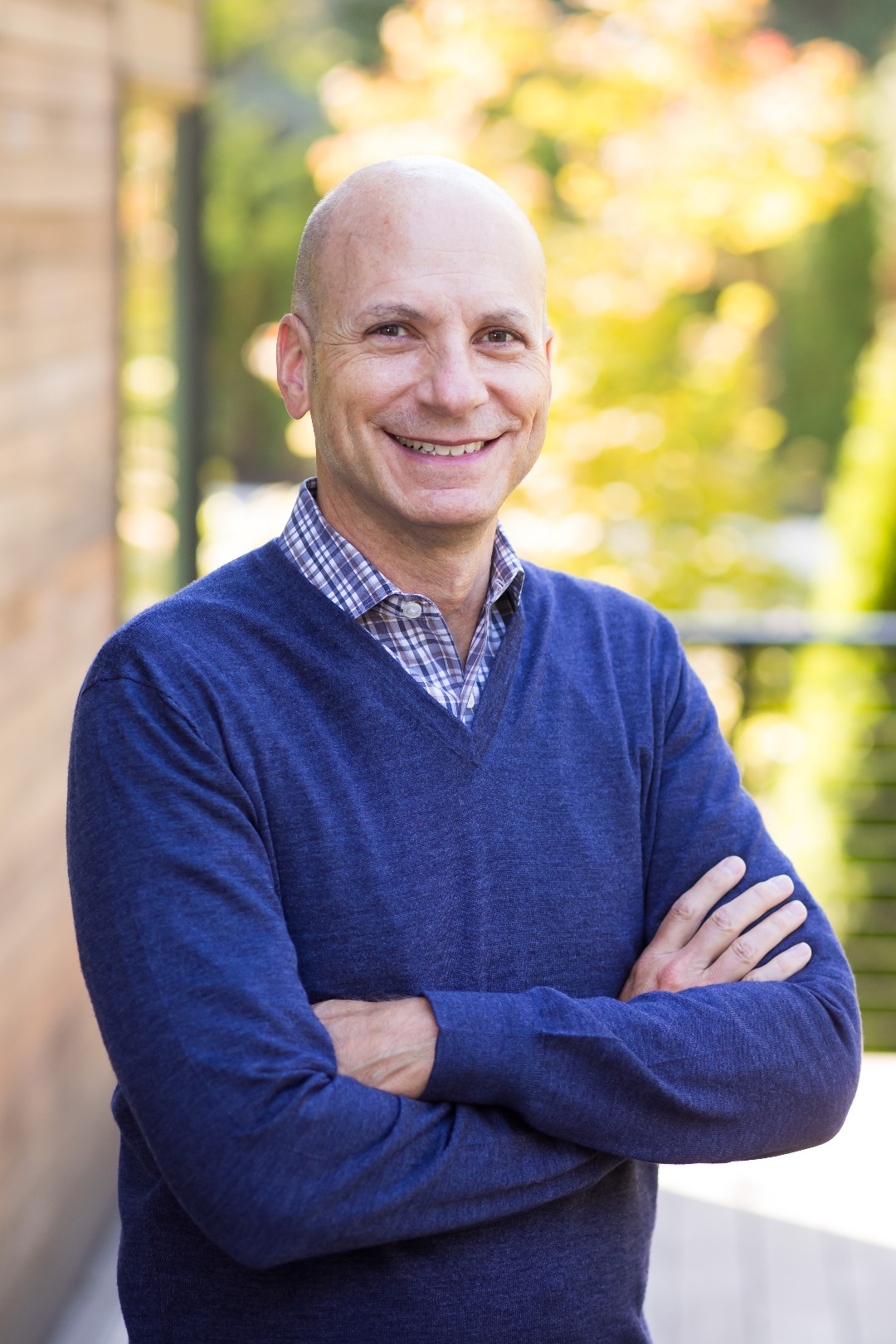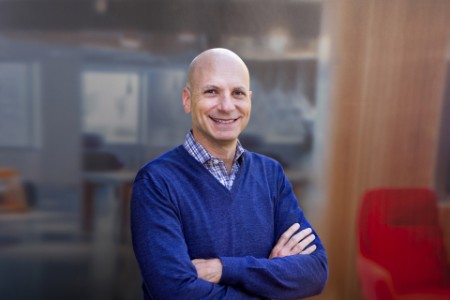In our Real leaders. Real stories. series, our CFO Advisor in Residence describes how he made an impact in the C-suite following a career at some of the largest consumer brands.
Patrick (Pat) Grismer has a peaceful, centered presence of a Zen master. With a smile and a measured, thoughtful cadence, Pat is a natural storyteller. You can imagine how, as CFO of top consumer brands, he calmed investors on earnings calls early in the pandemic, and steadfastly steered his teams through challenging situations.
Yet he wasn’t born with the smooth confidence of someone driven to reach the C-suite. His initial passion was art. In fact, he calls himself an accidental CFO, a role he first stepped into at a small, privately held company. He was 27 years old at the time, a mere four years after he graduated with an MBA in Finance. Immediately he began dreaming of bigger things in the field.
“My nature is once I decide to go after something, I shoot for the top,” Pat says. “Once I had determined that I was going to build a career in finance, for me, the pinnacle of success was to be a CFO for a large, publicly held company.”
He had a lot to learn, and some bumps along the way, cultivating his skills during good times and bad — putting him on a journey that would take him to the Walt Disney Co., Yum! Brands, Hyatt and Starbucks (from which he retired last year). Now, as the CFO Advisor in Residence at the EY Center for Executive Leadership, he passes along those lessons to the next generation. Here are three of them.
1. Don’t doubt yourself
During his first exposure to the rigors of a publicly traded company, he found that the CFO role was not oriented in the direction he was initially expecting.
“I thought that I would be spending a lot more time on things like business strategy, and goal setting, leading the organization, building and developing talent,” he says. “But I was surprised how much time was spent on communicating with the board and with the investment community and how much time was spent untangling challenging organizational matters.”
At the time, Pat was doubting his abilities. Know that, if you’ve made it to CFO, it’s because other people have confidence in your abilities, so don’t doubt yourself, he now says. But back then, he felt compelled to demonstrate his mastery of every subject — overcommunicating in lengthy technical emails or presentations. “You unknowingly paint a picture of someone who is hopelessly in the weeds and doesn’t see the bigger picture,” he says.

Pat Grismer
When you feel you have something to prove, it can get in the way of your effectiveness. Don’t let self-doubt sabotage your performance. You’re there for a reason.
However, he learned quickly that boards and investors want crisp, clear information and answers to their questions. If they need more information, they will ask you. Here he relied on his prior interest in art to drive his points home in a more interesting and compelling manner.
“Having a creative orientation is a benefit as a CFO,” he says. “One of the responsibilities of the CFO is to partner with the CEO and other members of the leadership team to develop a company’s strategic growth narrative, which is fundamentally storytelling.”
2. Don’t underestimate the value of relationships
Pat says he was lucky to have honest mentors and coaches, along with media and communications training, which helped him find his voice as a CFO. It quickly became clear to Pat that strong relationships would give him the political capital to be an effective leader — and that perhaps he should have spent more time with mentors, coaches and peers as he was moving up the ranks.
How EY can help
The Center for Executive Leadership
Investing time in people is a critical component of being a successful leader.
Relationships originate through friendships, Pat says. They are built through simple communication like reaching out and getting to know peers, board members and other stakeholders better, through time spent, empathy and vulnerability, and a common understanding.
“It was important for me to have relationships I could rely on when I had to make difficult decisions or resolve challenging conflicts. Knowing who the other person was, and knowing that they understood me, made those times easier.”
In your immediate team, make sure you have the strongest people you can find, Pat urges, whether that’s developing people inside the organization or finding new talent outside the organization. And strive to understand them not just as individuals but as collaborators — as a voice that needs to be part of a chorus.
This aspect was especially crucial as the COVID-19 pandemic struck and many consumer goods chains were left reeling in the wake of lockdowns. “I feel very proud and privileged to have been part of a team that made the business stronger, despite the impacts of the pandemic,” he says. “It was a tremendous accomplishment for me and a wonderful capstone to my career.”
3. You can’t do everything
Pat also learned that setting priorities is as true in the office as it is at home. There came a point when he knew that he needed to spend more time on his personal life.
“We had nine corporate relocations in 25 years,” Pat says. “It’s fair to say that in my quest for my career goals, and given my hard-driving nature, I compromised on personal balance.”
After making time for a family vacation to Costa Rica, Pat was struck by how he looked in photos. He didn’t even recognize himself.
“I thought, ‘Wow, I really have let myself go,’” he recalls. “I was subsisting on airline and hotel food and traveling around the world — having the time of my life, career-wise, and getting lots of great experience and exposure. But I was sacrificing exercise, diet and rest.”
He started to make changes to his diet and exercise routines, but habits are hard to form when you’re older, as he often tells his two adult children. He’s still working on training himself to get enough sleep (through a monitoring device and sleep scores — a numbers guy to the end).
Be targeted and thoughtful about what you can do, both personally and professionally. The opportunities for a CFO to influence the business are limitless, but to be successful you need to decide on just a few critical goals and stay focused on them.
Reflecting on his career, Pat feels the most pride in what his teams have accomplished, and a sense of gratitude for getting to tell the stories of great companies whose passion, mission and values he shared.
And being a great storyteller — a person who can take facts and figures and operational metrics and weave them into a narrative that compels interest and action, from everyone from recalcitrant board members to employees to investors — is a real artist at work.
About Pat
- As a kid, he had a passion and talent for art, and he studied drawing and painting. He wanted to go to art school with the ultimate goal of becoming a Disney animator. He eventually got to work for Disney, but in a totally different capacity.
- Pat’s father was a CFO himself. He told Pat he was concerned that the artist’s life would not be sustainable for him. He could practice art as a hobby, but he needed to concentrate on something that would give him a solid foundation to build a successful life. That, not coincidentally, was finance.
- After university, while he was working hard and focused on his goals as a management consultant, he made time to meet and marry Chris, also working at the same firm at the time. They have two adult children.

